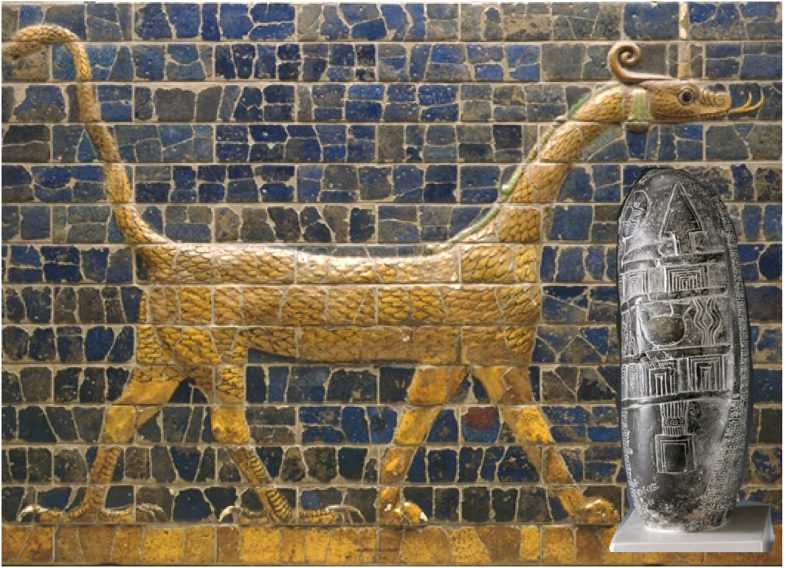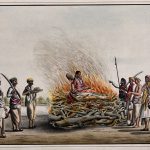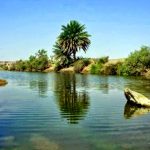Around 4,500 years ago the Babylonians (first called Akkadians after their capital Akkad, Agade) and the Assyrians settled in the Tigris-Euphrates valley. After that date the Amorites and Canaanites (including the Phoenicians) began to settle in greater Syria which includes Palestine (Hitti, p. 9).
It is believed the Amorites were the dominant nation in Najd at the time. Why did the Canaanite accompanied the Amorites is not clear. The answer may lie in their name _ Canaanite_. The word is an extension of the famous Yemeni root *KN. The original meaning of the root is linked to the home of married people. It is a place where they live according to known rules. One of the meanings of the word is “to snuggle in”. The act of snuggling would suggest nestling, curling up, huddling, ensconce oneself, lie close, etc.
The act was applied metaphorically to worshipping the one great God IL. This God is not Ra. He doesn’t rule with fear and He doesn’t expect human beings to worship him whether they like it or not. Islam in some ways is very close to Canaanite’s perception of God but the act of worshipping Allah is not “snuggling in” but total submission.
The Amorites are a tribe of the nation of Ad. The Adites identified IL and worshipped Him. The tenets or principles of IL’s worship are not clear. However, extensions from his name refer to children as “a gift” from God. Another extension, “wa’l” has a number of meanings including “appointees, agents, entrusted to do something”. Girls in Arabic are sometimes called ‘walaya’. The word seems to mean “agents” and by implication agents of god, probably because of their gift to give life when they give birth to babies.
Sufficient etymological proof confirms the Adites were civilized, gentle people so the god they envisaged was civilized and gentle like them.
The relationship between Amorites and Canaanites was more of an ancient alliance that started with Ad. At the time the Canaanites were known as the Sum. A group of Sum may have helped Ad escape to southern Mesopotamia when the A’adites invaded his home.
The pressing reason for the Canaanites’ departure may have been related to the intervention by Yemenis in a quarrel they had with their sister tribe Jadees in their joint homeland in Najd. The Yemenis exterminated all men of Jadees and took women and children as booty. The Canaanites, represented by the tribe of Tassam may have been blamed for the massacre and they found it appropriate to leave.
The name Amorite is in Akkadian:
amurru [Sum. MAR.TU: ] [Humanities → Geography → Countries] 1) (divine name); 2) West, the country situated West (Aram / Syria); 3): the Amorites; abi amurru: a prince, a sheikh [AD.DA.MAR.TU: ]; rabi amurru: (a high-ranking official); ṭupšar amurru: an Amorite scribe; 4): the wind from the West / western wind, West: [IM.MAR.TU: ] / also [IM.KUR.MAR: ]; astronomy: IM.₄; 5): [MUL.MAR.TU: ]: (western star) / Perseus.
Variants include amurrû and amurrānu
It is not clear why Amurru, a name of a man, should mean west. The Akkadian for west is erbu as in ereb šamši : the sunset. The full explanation of erēbu is: G. to enter, go in (+ana), come in (+vent.); to arrive; to set (sun) D. to record sth. on a tablet (+ana) Š. to introduce s.o.; to station (troops); to bring in, import; to send in (a letter).
Akkadian doesn’t have a letter for ayn (‛) and it is often represented by an ‘e’. An Arab in Akkadian is arbāiu : [Humanities → Geography → Countries] an Arab, Arab (adjective).
The letter ‘a’ at the beginning is ayn. The difference between west and Arab is not significant. The Amorites became masters of Mesopotamia and they may have found it suitable to use the name of the founder Mur. However, though one race, regionality comes usually first- Moroccans, Libyans, Egyptians, Palestinians, etc. All tribes know each other and they know their origins.
The Sumerians cannot be blamed for the failure to identify Mur/Mar with Marduk. The name Mar is the correct vocalisation. Amurru is a variant, nothing more.
Marduk became a great god in Mesopotamia. The interest of historians to know the origin of this god is important but they have not been looking in the right paces:
Leonard W. King in The Seven Tablets of Creation (1902) included fragments of god lists which he considered essential for the reconstruction of the meaning of Marduk’s name. Franz Bohl in his 1936 study of the fifty names (of Marduk) also referred to King’s list. Richard Litke (1958) noticed a similarity between Marduk’s names in the An: Anum list and those of the Enuma elish, albeit in a different arrangement.
Wikipedia, which provided the above paragraph, quotes that Marduk’s original character is “obscure”. To historians, maybe. But had he not existed, half the Arabs would have been orphaned immaturely, and so, probably, half Europeans most of whom appear to be descendants of Ad, whitish like him, with a bigger body build.
Some of his Ad’s children are huge. These belong to the Tay tribe are the ‘Amalek’ (giants) of the bible. The Israelites were exaggerating but not too much. One known Tai gentleman goes by the name “tower”.
Mesopotamian priests left a book of prayer to Marduk described as “the first comprehensive study of Babylonian prayers dedicated to Marduk, the god of Babylon, since J. Hehn’s essay Hymnen und Gebete an Marduk (1905).”
Marduk was Babylon’s god and later the most important god in Babylonia from the time of Hammurabi onwards. Takayoshi Oshima presents in his an up-to-date catalog of all known Babylonian prayers dedicated to Marduk from different historical periods. He offers critical editions of 31 ancient texts based on newly identified manuscripts and a collation of the previously published manuscripts. The author also discusses various aspects of Akkadian prayers to different deities and the ancient belief in the mechanism of punishment and redemption by Marduk.
https://books.google.com.mt/books/about/Babylonian_Prayers_to_Marduk.html?id=HQZM5Q3eKAQC&hl=en
“Marduk was said to be one of the most complex gods in ancient Mesopotamia.”Although the spelling of Marduk’s name appears to affiliate him with the sun god Utu/Šamaš, there is no evidence that he was ever considered to be the sun god’s son (Sommerfeld 1982: 11). On the contrary, tradition identifies Marduk as Enki/Ea’s son, clearly affiliating him with the pantheon of Eridu.”
http://oracc.museum.upenn.edu/amgg/listofdeities/marduk/index.html
Image: Marduk’s symbol animal, the mušḫuššu or “snake-dragon” at the Detroit Institute of Arts. This is a glazed brick relief from the city of Babylon itself, dating to the Neo-Babylonian period. Inset is Marduk’s symbol, the (triangular) spade, on top of a temple, as seen on the side of a kudurru TT at the British Museum. The relief probably dates to the late 12th century BCE. BM ME 102485.
Last modified: June 1, 2023



